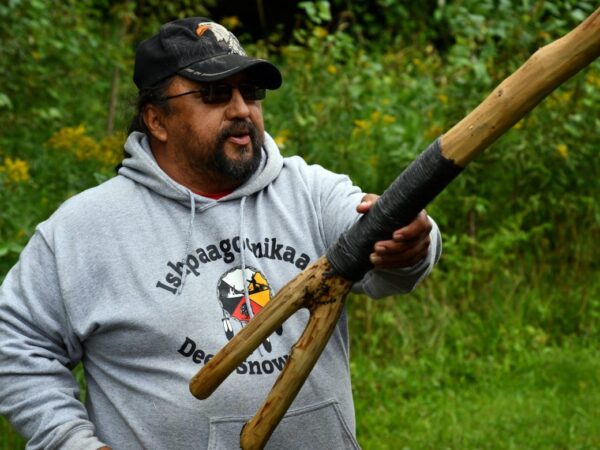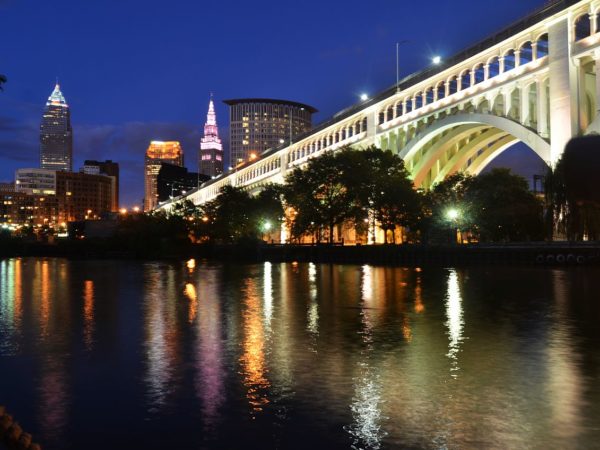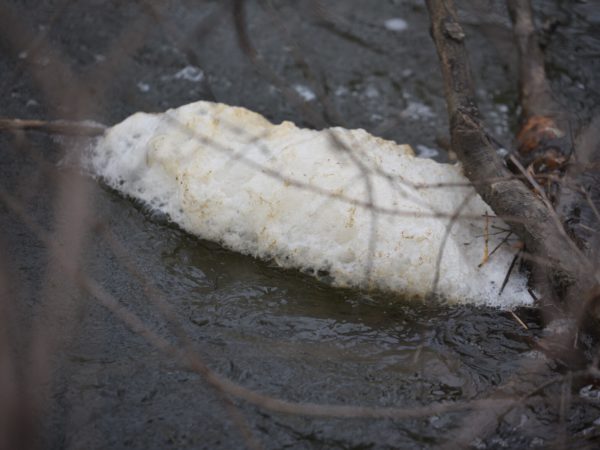
Zero sewage overflows by 2035 will require citizen engagement
Milwaukee’s Kevin Shafer has an ambitious goal for the agency charged with keeping sewage out of Lake Michigan.
He wants zero sewage overflows to the lake by 2035, a goal that has national colleagues and a Milwaukee environmental group questioning if he understands the inevitability of overflows.
“I put that vision out in 2009,” Shafer said, adding that the board of commissioners embraced it a year later. “We’re only averaging 2.3 overflows a year now. I think we can get there.” In the late 1990s, Milwaukee averaged between 50-60 overflows annually.
And they were big.
In 1999 Milwaukee sent over four billion gallons of overflow sewage to Lake Michigan. The volume has been declining since, though there have been years where it spiked before declining again.
Shafer is the executive director of the Milwaukee Metropolitan Sewerage District (MMSD) and is now in his 20th year on the job. His work is getting noticed by local environmentalists.
“MMSD’s work to reduce sewage overflows as well as promote green infrastructure has made them a national leader in the sewage treatment field,” Milwaukee Riverkeeper Cheryl Nenn told Great Lakes Now.
MMSD has more work to do, Nenn said, including adapting to emerging pollutants and preparing for the intense storms that climate change will bring. She characterized the 2035 zero-overflow goal as “audacious.”
Great Lakes Now talked with Shafer in his Milwaukee office recently after his staff provided a citizen briefing on MMSD’s work at a semi-annual open house. Here’s an edited version of the conversation.
Great Lakes Now: When you arrived at Milwaukee Metropolitan Sewerage District (MMSD) in 1999, the perception was that the agency was a bad actor when it came to sewage overflows and discharges to Lake Michigan. Now MMSD is seen as a regional or even a national leader on managing overflows. How did you change that perception?
Kevin Shafer: When I arrived 20 years ago the system was working well but there was a lack of outreach and public education. People didn’t understand what the deep tunnel that became operational in 1994 had done for them. There was a disconnect between our regulatory performance and public expectations. People expected more than meeting federal and state requirements. I said we needed to address this in a multi-tiered fashion. To continue to make improvements to facilities and to determine if more deep tunnel capacity was necessary. It was and we added it. We got out into the public working on flood management and green infrastructure projects. We wanted the public to be a part.of the discussion.
GLN: Do you embrace the accolade that MMSD is a national leader on sewage management issues?
KS: I do. I’m getting pulled from everywhere to speak. I was in Austin, Texas recently and I’ve been all over the country talking about Milwaukee and people ask, “How can you do all this stuff and how has it been received?” It’s just one of those things where we decided we were going to do it. I’ve got a phenomenal commission, and they’ve been very supportive.
GLN: It’s April and early in the rain event season. Last year was difficult for MMSD when sewage overflows spiked up after years of a declining trend line. What do you expect for 2019?
KS: I’m hoping for a normal rainfall pattern. I see rainfall come in cycles where there will be a couple years wet and a couple years drier. I’m not sure what to expect in 2019 but we’re doing everything we can to have all the systems operational and available and the tunnel empty when we have these big storm events. We already had one overflow earlier this year when we had 12 inches of snow on the ground and then had a day where the temperature hit 61. The entire snowpack melted in one day and all that water had to go somewhere and it entered our system.
So, we’re at one overflow right now and I’d like to keep it at one. But my number one priority is public health and safety so if we have to have an overflow to keep it out of people’s basements we’ll do that.
GLN: Can MMSD and other large municipal sewage systems build enough tunnels to prevent overflows?
KS: We have to have treatment plant capacity, we have to have pipes – the backbone of the system to handle some of these storms. We also have to build a more natural system on the surface to manage these storms that are coming. That’s where the green infrastructure comes into play. That’s where stormwater management comes into play. If “build” includes green infrastructure then we can go a long way when you add all those components together.
GLN: You have an ambitious goal of eliminating overflows by 2035. Can you make that goal?
KS: I think we can. I put that vision out in 2009. In some of the national speeches I give I talk about zero overflows and originally people laughed. Between 2010 and 2015 people would laugh because “you can’t stop an overflow.” We’re only averaging 2.3 overflows a year now. I think we can get there. It’ll be a combination of improvements at the plants. It’ll be green infrastructure. You can’t put all your eggs in one basket. You have to look at all the functions in the process. Protect Lake Michigan, that’s our number one goal.
GLN: What’s your advice to the average citizen when it comes to supporting green infrastructure and playing a part in reducing overflows?
KS: For too many years people thought big government is going to solve this problem for us. And they probably include MMSD as a part of big government. We’re part of the solution but we have to have that individual involved as well. People can do simple things like putting a rain barrel on their downspout. It’s low cost and provides water they can use for plants. Putting in a rain garden so the water doesn’t runoff and cause flooding. They’re simple things that I do in my own home. I’ve got two rain barrels. People can implement simple management principles to water and should ask themselves a question when it’s raining — where does that drop of water go and can I can slow it down?
Senior Correspondent Gary Wilson conducted the interview and it was recorded, transcribed and edited for clarity.
Featured Image: Manhole cover. Milwaukee, Wisconsin. Commerce Street area north of downtown, Photo by Aaron Volkening via flickr.com cc 2.0





